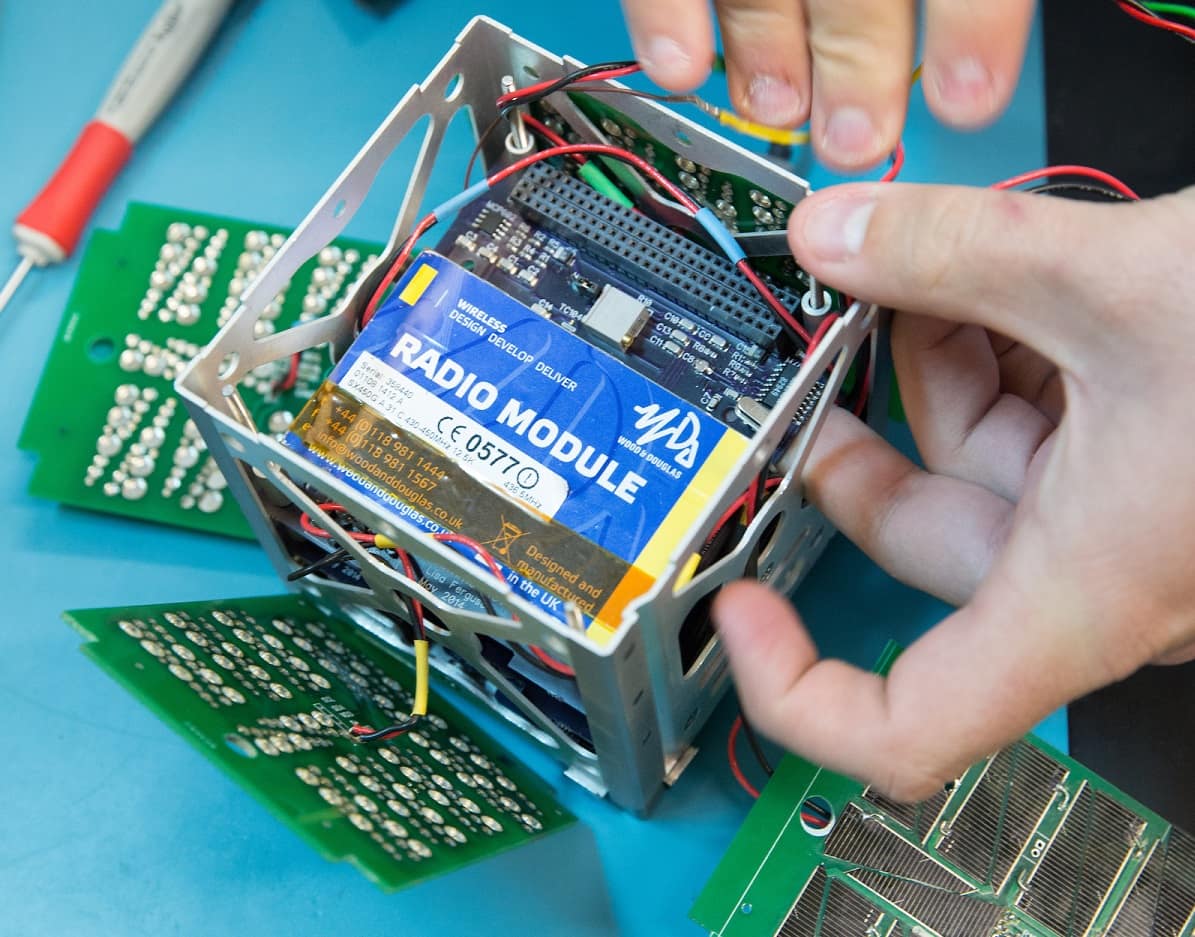Undergrad Research Symposium Highlights Diverse Projects

A quick glance at the 4-inch long “EagleSat” cube satellite built and tested by Embry-Riddle students reveals a quirky feature: the satellite’s antenna is a piece of yellow metal yardstick. It’s a design feature that other CubeSats have used, but how well does the antenna work in low and medium Earth orbit?
Ashley Villa, an electrical and electronics engineering major, is analyzing transmissions from the antenna as it is placed at different heights and orientations on the satellite, to optimize its design. “As it tumbles in space, it would rotate around, and you would have no idea if it would communicate back to your ground station at the frequency that you want,” she explained. “So that’s what I’m testing.”
Villa and her fellow EagleSat team member Hilliard Paige spoke about the EagleSat mission goals at the ninth annual Undergraduate Research Symposium, held Oct. 6 in the new Jim and Linda Lee Planetarium on Embry-Riddle’s Prescott, Ariz., campus. With presentations from all four colleges on campus, the symposium included 12 presentations that ranged from drone wing design to China’s views on international law.
The symposium “gives our students a chance to gain experience in public speaking and our audience a chance to see what the students are up to in terms of research around campus,” said Brennan Hughey, an assistant professor in the physics and astronomy department who helped coordinate the symposium.
As a small, STEM-focused undergraduate university, Hughey said, Embry-Riddle provides opportunities to join and even lead research projects from the time they step foot on campus. The symposium is an important part of that training, he noted. “We try to give them experience in the whole process, and that includes not only doing the research but learning to communicate as well.”
Forrest Mobley, a student now working in the Advanced Computer and Simulations Laboratory, presented his early findings on the fluid dynamics at work during in-flight refueling of aircraft by drones. The symposium was his first time speaking publicly about his project, and “I found the experience to be very helpful for my research, because it helped me organize my thoughts to a clear direction as I go forward,” he said.
The symposium was also the first opportunity for Pamela Ward, a student in the College of Aviation, to present her survey data on hypoxia experiences among general aviation pilots, which she hopes will eventually be used to create new training programs for pilots. After feeling some nerves before her talk began, Ward ended her presentation by fielding multiple questions from the audience. “As soon as I stood up and started speaking,” she said, “I realized that I was the expert in the room and that everyone there wanted to hear what I had to say.”
Other presentations from the symposium, held in conjunction with the campus’ OctoberWest alumni weekend, included updates on the university’s HyperLoop transportation competition team, a look at off-label marketing of drugs in the United States, the implementation of a new programming language to calculate the positions of Solar System moons and asteroids, and recent work related to the LIGO gravitational wave detection project.
For Rachael Bradshaw, president of the campus’ student-built aircraft project called Eagle Aero Sport, her presentation at the research symposium was only one of the alumni weekend events planned to promote her build team. One of the goals of the Eagle Aero Sport team has been to present their project in a variety of settings, she noted in her talk, including local schools and competitions.
Bradshaw recalled that she applied and was accepted to the team in her first semester on campus. “I was at freshman orientation and one of the professors introducing himself mentioned that he advised a team that’s building a full-sized plane. Instantly I turned to my parents and said, ‘I need on that team.’”
Students received funding for their work from the Undergraduate Research Institute, Arizona Space Grant, and through formal internships, said Anne Boettcher, director of the Undergraduate Research Institute and Honors Program. “The URI Advisory Board and campus as a whole are excited to see the progress on the projects and potential for the future,” she said.
*Written by Becky Ham
